How does our culture make us similar or different?
There are many definitions of culture, but in general terms, culture is one's way of life, how we understand the world around us, the material things we have made and our learned behaviors. Culture includes: language, religion, economics, family life, the arts, architecture, technology and many other facets of the world around us. While we usually do not include the natural order itself as part of one’s culture, how we understand and respond to nature is part of our cultural perspective.
Every culture must organize to sustain basic needs — food, shelter, clothing, labor, gender roles and family. While the needs remain similar among cultures, the ways they meet them can differ markedly. Each must respond to the resources and challenges it faces. Where soil and rainfall make agriculture a possibility, cultures often organize themselves according to the seasons that determine planting and harvest. Hunting cultures may prefer smaller units since it would be likely that it would be necessary to overhunt an area to feed a large population. With rapid and reliable transportation, large cities are possible because steady supplies of food can be shipped in.
Meskwaki Culture
The Meskwaki culture of the early 19th century provides an instructive comparison to our contemporary lifestyle. Men hunted deer and buffalo and protected the tribe while women gardened, took care of household needs like building bark lodges, preparing skins and sewing them into clothing, cooking, and caring for children. Religious stories were passed along from generation to generation through an oral tradition. Meskwaki boys learned hunting skills from their fathers and listened to tribal stories that prepared them to become leaders as adults. Meskwaki girls spent the days with the women learning how to feed and clothe their families. Both males and females participated in traditional dances the expressed their religious beliefs and formed a part of their courting rituals.
When white traders introduced manufactured items like iron cookware, cloth and firearms, Meskwaki hunters began hunting deer, beavers and other fur-bearing animals for skins that could be traded for items they could not produce themselves. The traders exchanged their inventories for the furs which were shipped back east and sometimes to European markets where they brought high prices. Excessive hunting sometimes forced tribes to look for better hunting grounds which could lead to tribal conflicts.
Modern Life
Modern life also needs to feed, clothe and educate its people. Men and women now tend to specialize in specific occupations rather than to provide all of a family’s needs themselves. A merchant sells goods and takes the money earned to buy the products of others rather than to produce the food, clothing, medicine and transportation the family needs. Boys and girls are taught together in classrooms rather than learning at home from their parents. Modern communication technology like the Internet and cell phone put the whole world within reach of even young children in ways the Meskwaki could never imagine. Events anywhere on the globe can instantly affect life in Iowa.
Still, Meskwaki boys and girls had many of the same needs that modern children have. They need to eat and be clothed to protect them from the elements, they need housing to live in and they need education to prepare them to become successful adults. The means to those ends may change but not the needs themselves.
Supporting Questions
Who are the Meskwaki?
- Meskwaki Bead Belt Made by Chi Ki Ka, 1905 (Image)
- Meskwaki Girl and Her Doll, 1925 (Image)
- "Mesquakie" Essay from The Goldfinch, February 1992 (Document)
- Meskwaki Boy's Bow and Arrows, Date Unknown (Image)
- Meskwaki Woman and Child by a Wickiup in Tama, Iowa, Date Unknown (Image)
What was life like for the Meskwaki long ago?
- Meskwaki Beadwork Hair String, 1905 (Image)
- Meskwaki Clothing, 1925 (Image)
- Meskwaki Doll, 1925 (Image)
- "A Mesquakie Folk Tale" in The Goldfinch, September 1991 (Document)
- "Corn Shelling with the Mesquakies" in The Goldfinch, 1993 (Document)
- Meskwaki Pictograph, ca. 1830 (Image)
How do the Meskwaki live now?
- "The People of Iowa" Essay from The Goldfinch, September 1985 (Document)
- "Mesquakie Powwow Keeps Tradition Alive" Essay from The Goldfinch, 1998 (Document, Images)
- Meskwaki Natural Resources Pottery Workshop, September 30, 2017 (Images)
- Meskwaki Members Show Settlement Students the Maple Syrup Process, March 2018 (Images)
- 104th Annual Meskwaki Powwow, August 2018 (Images)
- "Meskwaki Powwow" from Iowa Public Television, August 1, 2018 (Video)
- Round Basket Class with Meskwaki Natural Resources, October 2018 (Images)
- "Iowa Gov. Kim Reynolds proclaims Monday as Indigenous Peoples Day" Newspaper Article, October 8, 2018 (Document)
- Meskwaki Turkey Trot, November 22, 2018 (Images)
- Meskwaki Holiday Expo, December 7, 2018 (Images)
- Meskwaki Frybread, July 10, 2019 (Images)
- Meskwaki Land Use Map, Date Unknown (Map)
- Students at the Meskwaki Settlement School, Various Dates (Images)
Meskwaki Culture Teaching Guide
Printable Image and Document Guide
Meskwaki Girl and Her Doll, 1925
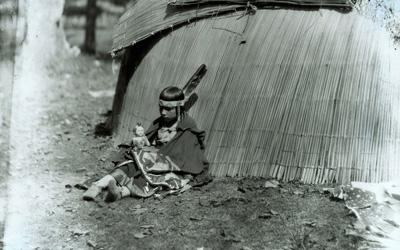
Description
This photograph shows a Meskwaki girl playing with her doll beside a wickiup. The photo was taken on the Meskwaki Settlement in Tama, Iowa, in 1925. The photographer was Josephine Wallace.
Meskwaki Bead Belt Made by Chi Ki Ka, 1905
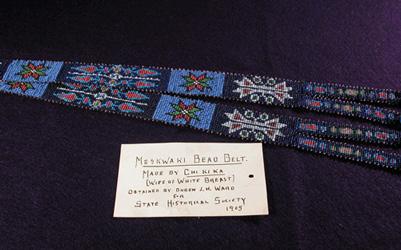
Description
The Meskwaki bartered for cloth, glass beads, iron and copper cooking utensils, blankets and guns with pelts when they encountered European-Americans. The trade beads became the most important thing to the Meskwaki. These beads of many colors and sizes were made into many…
"Mesquakie" Essay from The Goldfinch, February 1992
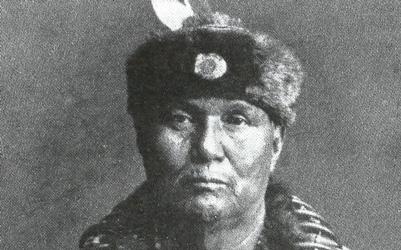
Description
This Goldfinch article highlights who the "Mesquakie" people are, how they came to Iowa, how they built their wickiup homes and traded and bartered animal pelts.
Meskwaki Boy's Bow and Arrows, Date Unknown
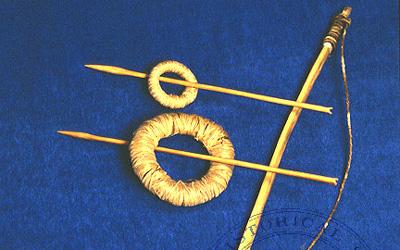
Description
Men and young boys went on seasonal hunts for large and small game, including deer and buffalo, and later engaged in fur trading. Young boys were taught to hunt for small game to supplement the family's food supply. Small blunt-ended arrows were used to knock out rabbits,…
Meskwaki Woman and Child by a Wickiup in Tama, Iowa, Date Unknown
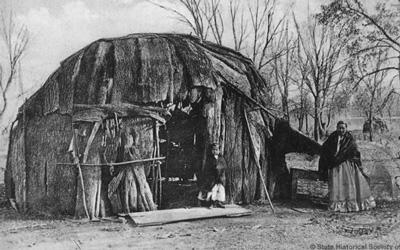
Description
A Meskwaki woman, child and dog are pictured outside of a dwelling in Tama, Iowa. During the summer months (May to September), the Meskwaki lived in villages located along major rivers in the center of tribal lands. Their homes consisted of poles covered with slabs of elm…
Meskwaki Beadwork Hair String, 1905
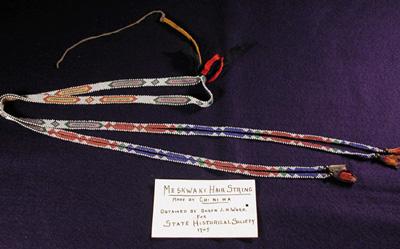
Description
Art has always been a part of life for the Meskwaki. Through the arts Meskwaki artists express pride in their tribe and its values and history. Even today beadworking traditions are keep alive as well as finger weaving (weaving without a loom), carving, drum…
Meskwaki Clothing, 1925
![Young Bear [Ma-qi-ba-na-da]. Meskwaki Settlement (Tama, Iowa). 1925 Young Bear [Ma-qi-ba-na-da]. Meskwaki Settlement (Tama, Iowa). 1925](/sites/default/files/styles/large/public/education/primary-source-previews/history-education-pss-meskwaki-clothing-preview_0.jpg?itok=NDSxABIe)
Description
This is a photograph of Young Bear on the Meskwaki Settlement in Tama, Iowa, in 1925. The Sac and Fox women wore wraparound skirts. Sac and Fox men wore breechcloths and leggings. Shirts were not necessary in the Sac and Fox culture, but people wore ponchos when the weather…
Meskwaki Doll, 1925

Description
A child's doll was not meant to be a lasting keepsake in a lot of American Indian tribes. Dolls were usually made of perishable materials like cornhusks or bundled pine, were not often built to last. Some dolls and other childhood things naturally fell apart with time, it…
"A Mesquakie Folk Tale" in The Goldfinch, September 1991
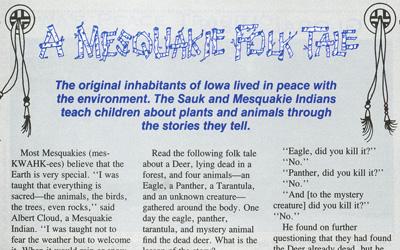
Description
This passage explains the importance of teaching Meskwaki children about the environment from stories and songs that are handed down orally (spoken aloud) by their elders. Through these folk tales, children learn what one important aspect of being a Meskwaki is all about…
"Corn Shelling with the Mesquakies" in The Goldfinch, 1993
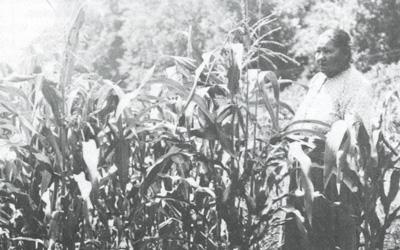
Description
This Goldfinch article and image highlight the importance of corn throughout time in the Meskwaki culture.
Meskwaki Pictograph, ca. 1830
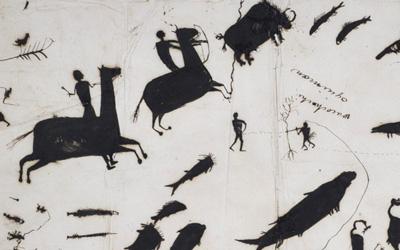
Description
This drawing is attributed to Wacochachi, a member of the Fox clan of the Meskwaki tribe and an important war chief. Created with many layers of meaning, this pictograph was executed in pen and ink on two sheets of paper joined by sealing wax, probably in the 1830s or 1840s…
"The People of Iowa" Essay from The Goldfinch, September 1985
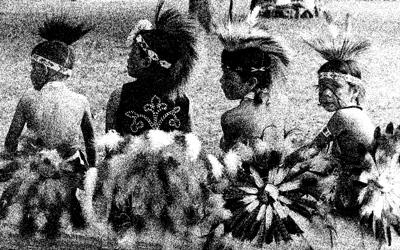
Description
The Meskwaki are of Algonquian origin from the prehistoric Woodland period culture area. The Meskwaki language is a dialect of the language spoken by the Sauk and Kickapoo, within the Algonquian languages family. The Meskwaki Language Preservation Program was established by…
"Mesquakie Powwow Keeps Tradition Alive" Essay from The Goldfinch, 1998
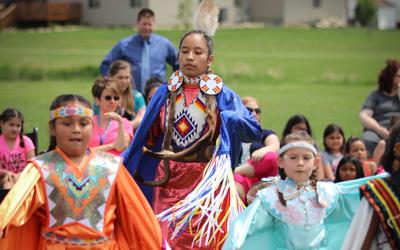
Description
The Goldfinch article highlights the importance of the Meskwaki Powwow through historical, economic and cultural lenses.The images are from the 2018 Meskwaki Powwow.
Meskwaki Natural Resources Pottery Workshop, September 30, 2017
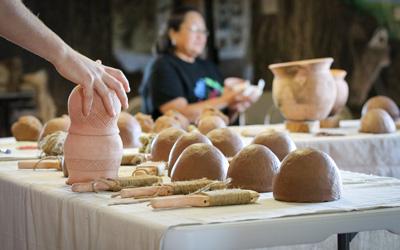
Description
Meskwaki Natural Resources welcomed in Daniel Youngbauer as a special guest instructor on Sept. 30, 2017, for a three-day pottery workshop. Participants practiced traditional techniques from Meskwaki Grande Village, Bell Site in Wisconsin…
Meskwaki Members Show Settlement Students the Maple Syrup Process, March 2018

Description
In the past, coming from their winter camps, the Meskwaki went to their sugar camps. There they spent a few weeks making maple syrup and sugar. Maple syrup and sugar was made by the collection of maple sap. The collection of the sap was done in late winter or early spring…
104th Annual Meskwaki Powwow, August 2018

Description
The Meskwaki Annual Powwow is the only one of its kind in Iowa. It is a four-day event used to celebrate the end of summer. As the color and intrigue of it all has drawn the most attention from the outside world, the powwow features dancing, singing, handcrafts, food, games…
"Meskwaki Powwow" from Iowa Public Television, August 1, 2018
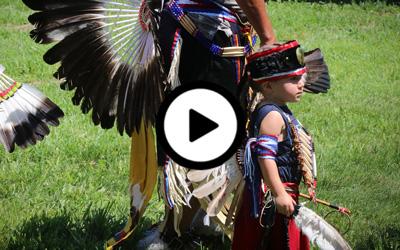
Description
This video from Iowa Public Television explains the history of the powwow and the traditions of the Meskwaki through personal interviews and actual dances.
Round Basket Class with Meskwaki Natural Resources, October 2018

Description
On October 8 and 9, 2018, the Meskwaki Natural Resources (MNR) hosted their first ever round basket making class. The class was a two-day event that provided participants hands on instruction in the techniques of building a round, simple-handled berry basket. The group was…
"Iowa Gov. Kim Reynolds proclaims Monday as Indigenous Peoples Day" Newspaper Article, October 8, 2018
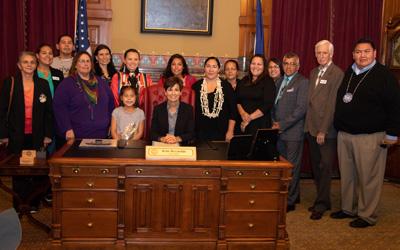
Description
The State of Iowa issued a proclamation on Oct. 8, 2018, recognizing the day as Indigenous Peoples Day in the State of Iowa. Members of the Meskwaki Nation traveled to the State Capitol building in Des Moines to witness Governor Kim Reynolds sign and…
Meskwaki Turkey Trot, November 22, 2018
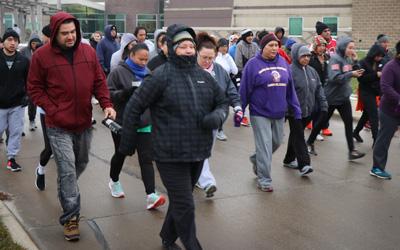
Description
On November 22, 2018, the Meskwaki Health Clinic sponsored the Turkey Trot fun run. Runners got up early and ran an out-and-back course from the clinic to the T-intersection. The overall winners were awarded trophies and category winners went home with a pie.
Meskwaki Holiday Expo, December 7, 2018
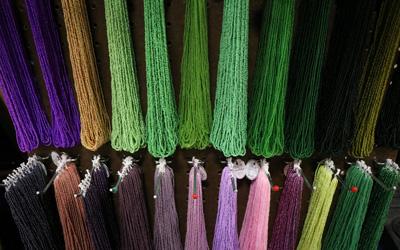
Description
On December 7 and 8, 2018, community members strolled through the Tribal Center gym for some holiday shopping at the annual Meskwaki Holiday Expo. Meals were served by various fundraising groups and shoppers got to browse through nearly 30 vendors.
Meskwaki Frybread, July 10, 2019
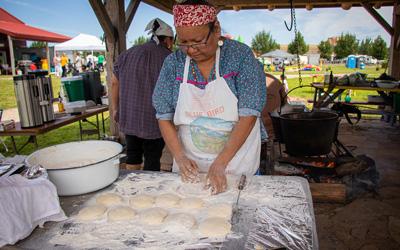
Description
An important part of the Meskwaki Powwow is great American Indian food and crafts. Hungry dancers and guests fill up their plates with Indian Tacos, frybread and other treats. American Indian artists sell jewelry, clothing and other stuff. Bread made by Meskwaki women is "…
Meskwaki Land Use Map, Date Unknown
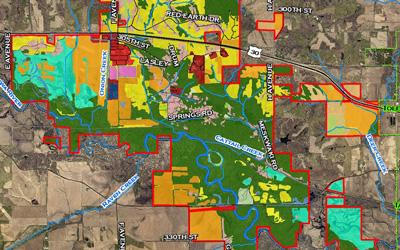
Description
The Land Use map and key show how the Meskwaki people currently use their land.
Students at the Meskwaki Settlement School, Various Dates

Description
These photos show school children who attend the Meskwaki Settlement School. One image shows students graduating from kindergarten, one shows students eating in the cafeteria. Another image shows elementary students learning in their classroom. The last photo shows the sign…
Additional Resources:
- Sac and Fox Indian Fact Sheet
This online fact sheet was written to provide children with basic facts about the Sac and Fox tribe. - Sac and Fox Song
This video features a Sac and Fox prayer song. - When Turtle Grew Feathers: A Tale from the Choctaw Nation by Tim Tingle
In this Choctaw variant of Aesop's fable "The Tortoise and the Hare," master storyteller Tim Tingle reveals some unexpected twists and expands the cast of memorable characters to include a wild turkey, a colony of ants, and a cheering squad of turtles. - Meskwaki Nation - Language Preservation
This website from the Meskwaki Nation provides the history the Meskwaki language, efforts made in its preservation and a video to learn some basic words in the language. - Bowwow Powwow by Brenda J. Child
This playful story by Brenda Child is accompanied by a companion retelling in Ojibwe by Gordon Jourdain and brought to life by Jonathan Thunder's vibrant dreamscapes. The result is a powwow tale for the ages. - Hungry Johnny by Cheryl Minnema
At the community feast, observing the bounty of festive foods and counting the numerous elders yet to be seated, Johnny learns to be patient and respectful despite his growling tummy. - Jingle Dancer by Cynthia Leitich Smith
Jenna, a contemporary Muscogee (Creek) girl in Oklahoma, wants to honor a family tradition by jingle dancing at the next powwow. But where will she find enough jingles for her dress? An unusual, warm family story, beautifully evoked in Cornelius Van Wright and Ying-Hwa Hu's watercolor art.
Iowa Core Social Studies Standards (1st Grade)
Listed below are the Iowa Core Social Studies content anchor standards that are best reflected in this source set. The content standards applied to this set are elementary-age level and encompass the key disciplines that make up social studies for first-grade students.
| No. | Standard Description |
| SS.1.7. | Investigate how social identities can influence students’ own and others’ thoughts and behaviors. |
| SS.1.9. | Describe a situation that exemplifies democratic principles including, but not limited to, equality, freedom, liberty, respect for individual rights, and deliberation. (21st century skills) |
| SS.1.17. | Describe how environmental characteristics and cultural characteristics impact each other in different regions of the U.S. |
| SS.1.18. | Use a map to detail the journey of particular people, goods, or ideas as they move from place to place. |
| SS.1.23. | Describe the diverse cultural makeup of Iowa’s past and present in the local community, including indigenous and agricultural communities. |